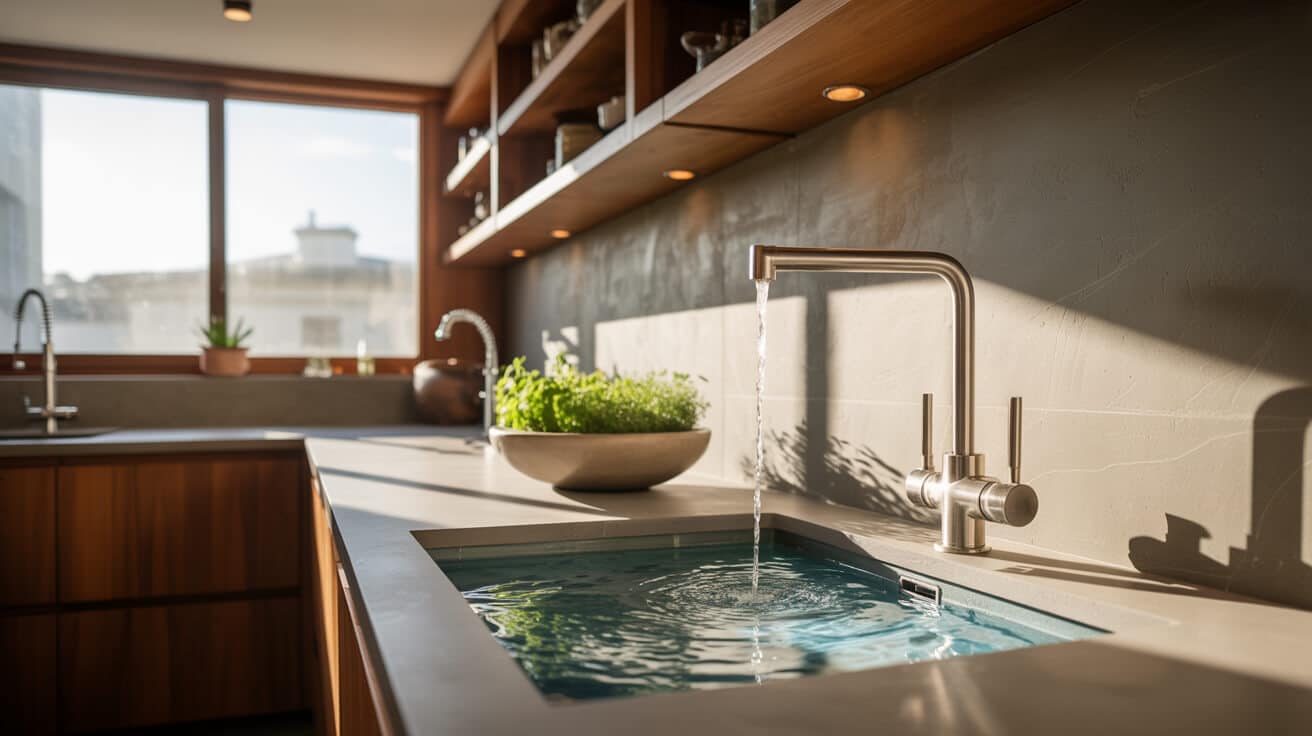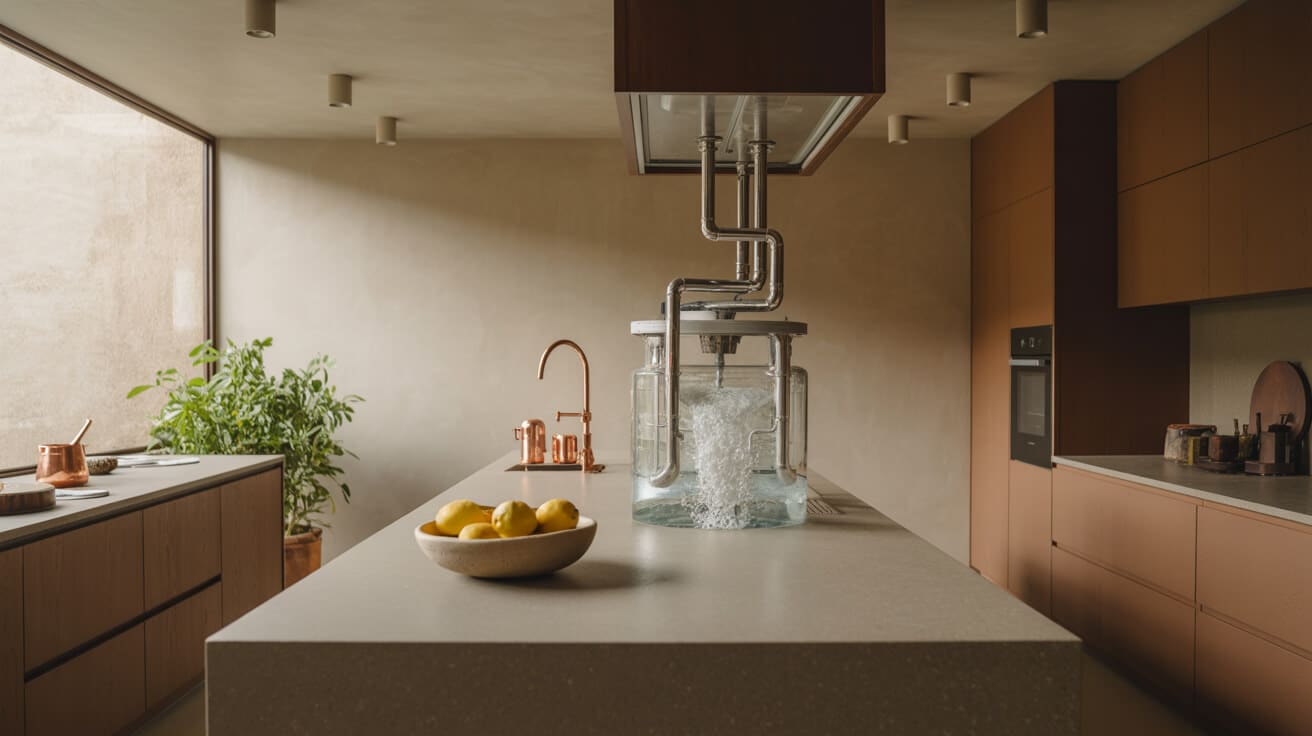Etymology or name origin
Rainwater harvesting derives from the conflation of “rainwater” (naturally occurring precipitation) and “harvesting” (the process of gathering or collecting a resource). Historical records document techniques for rain catchment as far back as ancient Mesopotamia, the Roman Empire, and early South Asian civilizations, where stored rainwater provided a hedge against aridity and erratic seasonal water supplies. Over time, synonyms such as “rainwater collection,” “stormwater recovery,” and “rainwater reuse” have entered technical and regulatory lexicons, particularly as plumbing and building systems have become more sophisticated.
Overview / context
Water scarcity, climate unpredictability, and regulatory ambition now position rainwater capture as an essential adaptation in building engineering. For property owners, rainwater systems provide a means of answering emerging water use mandates, lowering long-term operational costs, and futureproofing buildings against mains water volatility or rate escalation.
In the United Kingdom, regulatory authorities such as the Water Regulations Advisory Scheme (WRAS) and British Standards Institution (BSI) set strict parameters on system installation and usage. Companies operating in the plumbing and heating sector, such as Plumbers 4U, are tasked with detailed system integration—designing compliant interfaces with existing water infrastructure, non-potable distribution, backflow prevention, and storage. In commercial and residential development, planning frameworks may further require incorporation of SuDS (Sustainable Drainage Systems), particularly for surface flooding risk management in built-up areas.
History
Ancient practices
Communities in ancient Mesopotamia, Egypt, India, and Rome employed cisterns, aqueducts, and subterranean tanks to collect and store seasonal rainfall for dry periods. The Mediterranean tradition of domestic courtyards with central rain catchment continued in vernacular architecture for centuries.
Industrial emergence
Centralised water utilities in the 19th and early 20th centuries displaced household and local-scale harvesting in much of Europe and North America. However, in rural regions and colonial outposts, rainwater systems supplied essential water to settlements unconnected to main utilities.
Plastic and composite tank manufacturing in the mid-to-late 20th century increased system capacity and longevity, while advances in filtration and submersible pump technology supported more ambitious building-scale deployments.
Contemporary evolution
In the UK, rising water costs, urban densification, and regulatory tightening since the 1990s prompted a resurgence in rainwater harvesting as both a sustainability driver and a risk management strategy. Modern systems are increasingly modular, automated, and integrated as part of whole-building plumbing and heating solutions, often situated to achieve asset value uplifts or support formal sustainability certifications such as BREEAM.

Concept / description
Rainwater systems are purpose-built assemblies designed to intercept roof runoff, purify it, store it, and deliver it to points of use considered low-risk from a hygiene perspective. Critical elements include:
- Catchment surfaces: Frequently pitched tiled, slate, or metal roofs, as specified by local code (e.g., BS EN 12056-3), to maximise run-off and limit contaminants.
- Conveyance: Gutter and downpipe networks deliver rainfall to intercept points, where initial flows (often contaminated with particulate debris) may be excluded using first-flush diverters.
- Filtration and storage: After initial screening, water enters multi-stage filtration systems (e.g., mesh, sediment, sand, or UV), before collection in dark, inert, often enclosed tanks to limit biological growth. Tank sizing is determined by catchment area, local rainfall, intended usage, and site conditions.
- Distribution networks: Water is channelled to non-potable outlets—commonly VCs, urinals, irrigation, or process water—via dedicated pipework, often colour-coded and clearly labelled under WRAS and BSI guidance to prevent cross-connection.
- Backflow prevention: Mandatory at all interfaces with potable water or risk-graded environments (e.g., Category 5 in UK law), using physical air gaps, break tanks, and approved valve assemblies.
- Automation and monitoring: Control panels with level sensors, pressure switches, and automated top-up valves (drawing on mains water in dry periods), as well as remote or on-site diagnostics for maintenance and safety assurance.
Diagrammatic representations often use colour-labelled pathways for harvested vs. potable supply, highlighting points of physical separation, filtration, and delivery.
Functionality / purpose / applications
Water reduction and resilience
Rainwater systems achieve direct saving on mains water bills by displacing potable supply for uses where water quality requirements are relaxed. The proportion can rise to 50% or more in commercial or institutional buildings with substantial irrigation or cleaning demands.
Non-potable usage points
- Toilets/urinals: Accounts for up to 30% of total residential water consumption.
- Laundry: Systematic in large buildings, case-by-case in dwellings—requires consistent filtration and maintenance protocols.
- Landscaping/garden irrigation: Particularly valuable during hosepipe bans or drought events.
- Cleaning/vehicle washing: Suitable when water clarity and hygiene are less stringent.
Additional system benefits
- Site-specific runoff attenuation: Rainwater tanks can slow or buffer stormwater, reducing downstream flood risk and contributing to SuDS compliance.
- Building asset value: Demonstrable water efficiency and “blue infrastructure” investment help secure corporate ESG goals and tenant satisfaction.
- Planning condition fulfilment: Where authorities require explicit water-saving or drainage control mitigation.
Classifications / types / variants
By supply method
- Direct supply: Pump feeds water directly to the point of demand; advantageous for precise delivery but vulnerable to power outages or pump faults.
- Indirect supply: Harvested water is pumped to a header or gravity feed tank for onward delivery, providing pressure stability but adding system complexity.
By storage location
- Above-ground storage: Cut capital cost and facilitate easier service, inspection, and retrofitting, but are more vulnerable to frost and vandalism.
- Below-ground storage: Greater thermal stability and security, supporting larger capacities and more discreet visual integration with landscaping.
By filtration and treatment
- Single-stage mesh or sediment philtres: Suit lower-usage or short-duration applications.
- Multi-stage (sand, carbon, UV): Employed for systems with higher hygiene or quality assurance needs or where additional risk mitigation is warranted.
By building type
- Domestic property: System designs prioritise simplicity, compact storage, and minimal maintenance routines.
- Multi-occupancy/block: Deployment may require larger tanks, header feeds, and stricter compliance documentation for shared user safety.
- Commercial/institutional: May involve extensive scale, process optimization for industrial water cycles, and digital system monitoring for reporting and fault response.
Systems / tools / methodologies
Component listing
| Component | Common Materials | Function | Regulatory Context |
|---|---|---|---|
| Catchment | Tile, Metal, Synthetic Roof | Rain collection | BS EN 12056-3 |
| Gutters/Downpipes | uPVC, Aluminium, Galvanised | Conveyance | WRAS |
| First-Flush Diverter | uPVC, Metal | Debris/contaminant separation | WRAS, installation guides |
| Philtres | Mesh, Sand, Carbon, UV units | Water quality improvement | BS EN 16941-1 |
| Storage Tanks | Polyethylene, Concrete, GRP | Storage/attenuation | BS EN 16941-1, local codes |
| Pumps | Submersible, Jet | Distribution | Electrical regs, BSI |
| Non-potable Pipework | uPVC, MDPE | Delivery to end use | WRAS, colour/labelling mandates |
| Backflow Devices | Airgap, Break Tank, Double Check | Contamination prevention | WRAS, Fluid Cat 5 |
| Control panels | OEM proprietary/PLC | Automation, alerts | User standards, BSI |
Methodological notes
System commissioning protocols for domestic and commercial settings include pressure testing, water quality analysis, and detailed user/maintenance manual handover. Case-based simulation is used in larger projects to validate system capacity relative to historic rainfall and usage patterns.

Stakeholders / entities involved
Plumbing & heating contractors (e.g., Plumbers 4U)
Your contractor bridges technical, regulatory, and user spheres in specifying system requirements, ensuring regulatory fit, and providing guarantees on workmanship and compliance. Integration with your heating or water infrastructure is tailored to your property type and functional objectives.
Property owners, landlords, property managers
Your responsibilities typically include ensuring system operation, periodic inspection, retention of compliance and warranty documentation, and engagement with service providers for essential maintenance and upgrades.
Facilities directors, commercial site management
Your organisation may deploy dedicated teams or engage service contracts to maintain high-uptime, compliance, and operational efficiency, particularly where rainwater systems interface with critical site assets or serve as a condition of regulatory approval.
Regulators and certifying bodies
Statutory bodies such as WRAS, BSI, and local authorities enforce adherence to code, random inspection, and, for certain commercial and multi-dwelling units, periodic reporting or certification renewal.
Manufacturers and suppliers
Certified brands contribute innovation in tank design, system reliability, and automation, and may also provide integration with wider building management solutions or digital diagnostics.
Legal / regulatory / ethical considerations
Statutory requirements
UK law, through the Water Supply (Water Fittings) Regulations 1999, Building Regulations Part G (Water Efficiency), and accompanying WRAS guidance, dictates that all rainwater system components must be installed to prevent accidental cross-contamination and to protect potable water.
- Fluid Category 5 installations: (highest-risk, e.g., where rainwater can enter potable mains) require air gaps, break tanks, or double-check valve assemblies.
- WRAS and BSI compliance: is required for all pipework components, colour labelling, and documentation.
- SuDS mandates: Many developments must demonstrate reduced runoff rates, which can be met in part by evidence of rainwater infrastructure.
Documentation and maintenance
Maintenance logs, compliance records, and, where relevant, certifications (BS EN 16941-1, system test logs) must be kept up to date to satisfy insurance and audit requirements—with risk of remedial orders or fines for delinquency.
- Landlords: are responsible for ensuring all system documentation is available for tenant review.
- Commercial organisations: typically require robust service contracts as a condition of facilities accreditation.
Performance metrics / data / measurements
Water yield and efficiency
The anticipated annual water yield is functionally determined by the formula:
Annual Yield = Roof Area (m²) × Annual Rainfall (mm) × Collection Efficiency Coefficient
Actual savings will depend on rainfall volatility, roof material, philtre and diverter efficiency, and maintenance frequency.
Usage effects
- Reduction in mains water of up to 50% in some multi-occupancy or commercial premises when toilets, irrigation, and cleaning are included in the reuse circuit.
- Measurable decreases in site-specific water bills, proportionate to your non-potable consumption.
ROI and cost analysis
- Capital cost: Storage, filtration, and installation.
- Operating/marginal cost: Regular philtre changes, tank cleaning, power for pumps, annual service.
- Grants/incentives: Certain local authorities and national programmes offer grant support on a rolling basis for SuDS-compliant upgrades.
| Metric | Typical Domestic Range | Typical Commercial Range |
|---|---|---|
| Storage Volume | 1,000–5,000 L | 10,000–50,000+ L |
| Yield Potential (annual) | 25,000–45,000 L | 250,000+ L |
| Payback Period | 5–15 years | 3–10 years |
Challenges / barriers / limitations
Technical limitations
- System dependence: on rainfall introduces supply unpredictability during drought.
- Pump and filtration failures: may disrupt reliability, underlining routine inspection importance.
- Biological risk: if tanks are exposed to sunlight or not regularly cleaned; can be mitigated with proper design, maintenance, and system monitoring.
Site and design constraints
- Retrofitting: in existing properties may be limited by space, pipe routing complexity, or unwillingness to disrupt internal finishes.
- Frost risk: Above-ground tanks and pipework must be well insulated or drained during low temperature exposure.
Compliance and behavioural challenges
- Documentation lapses or improper usage (e.g., cross-connection to potable pipe) can result in penalties.
- Lack of awareness or engagement among end users may lead to underutilization of system benefits or neglected servicing.
Economic barriers
- Upfront capital outlay remains a common friction point, especially in sectors with thin operating margins.
- Grant funding, when available, may entail protracted application/inspection cycles, and is commonly capped or time-limited.
Impact / influence / legacy
Rainwater harvesting shapes water stewardship behaviours, enhances your property’s resilience, and aligns your organisation with evolving social and regulatory expectations. Widespread adoption has influenced plumbing, heating, and drainage best practice by embedding sustainability and risk management into building operations. As a result, asset values can be incrementally improved; tenants and buyers increasingly express interest in viewing water efficiency as indicative of overall building quality.
The technical, legal, and operational lessons of widespread adoption also inform policy, shifting industry norms in design and maintenance, and ushering in new standards for combined water and building system management across property portfolios.
Future directions, cultural relevance, and design discourse
Technological innovation continues in filtration, AI-driven sensing for maintenance, and modular system approaches that reduce installation disruption and capital outlay. The regulatory environment in the UK and Europe reflects this trend toward prescriptive water management within planning policy, incentivizing both New Build and retrofit strategies. Cultural movements around sustainability and resilience further drive market demand and influence architectural design, leading to new models for blended blue-green solutions in urban environments.
Over time, the confluence of technical, economic, and cultural factors is expected to foster widespread adoption, transforming rainwater harvesting from optional enhancement to anticipated feature in both existing and future properties.

